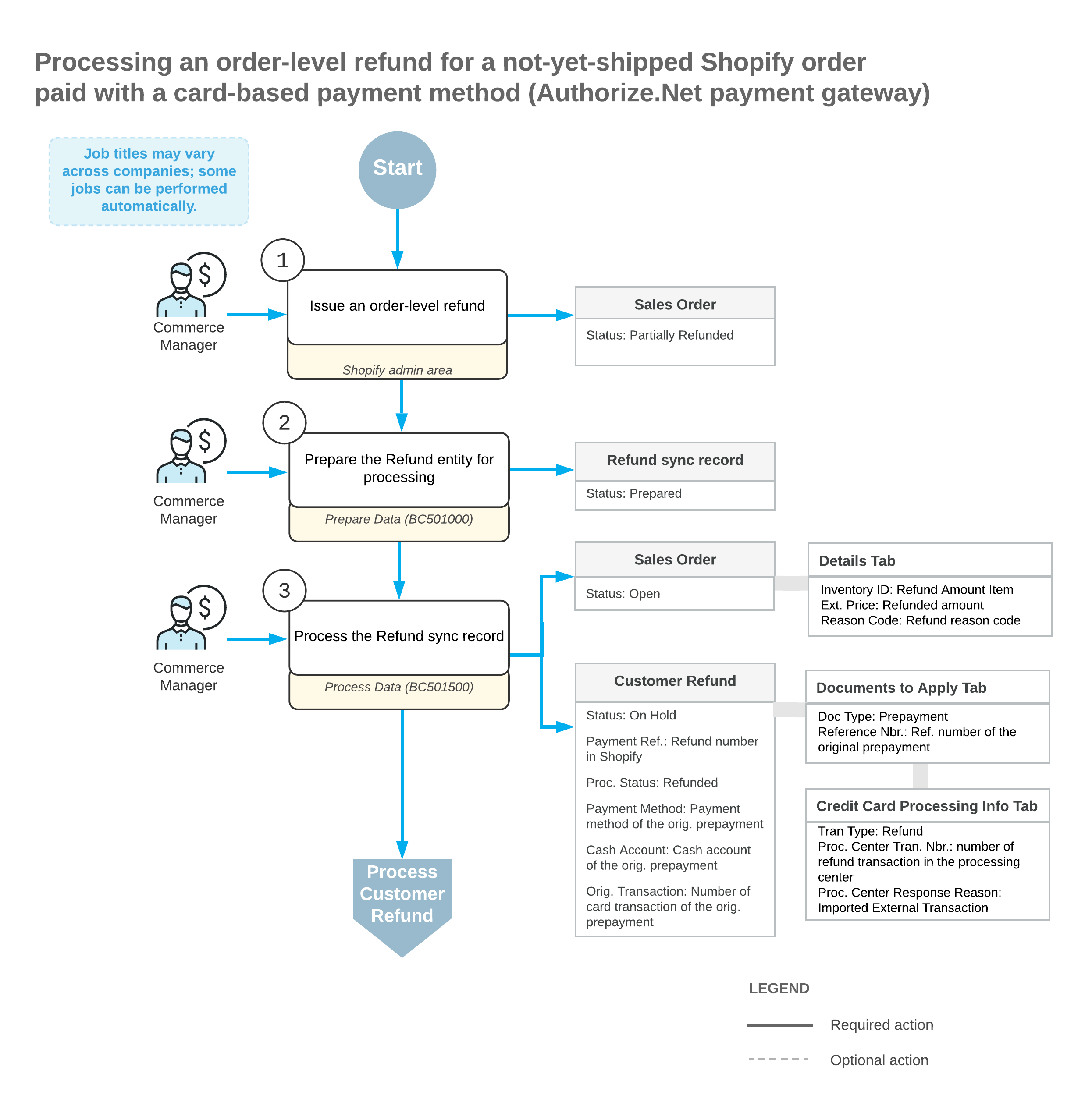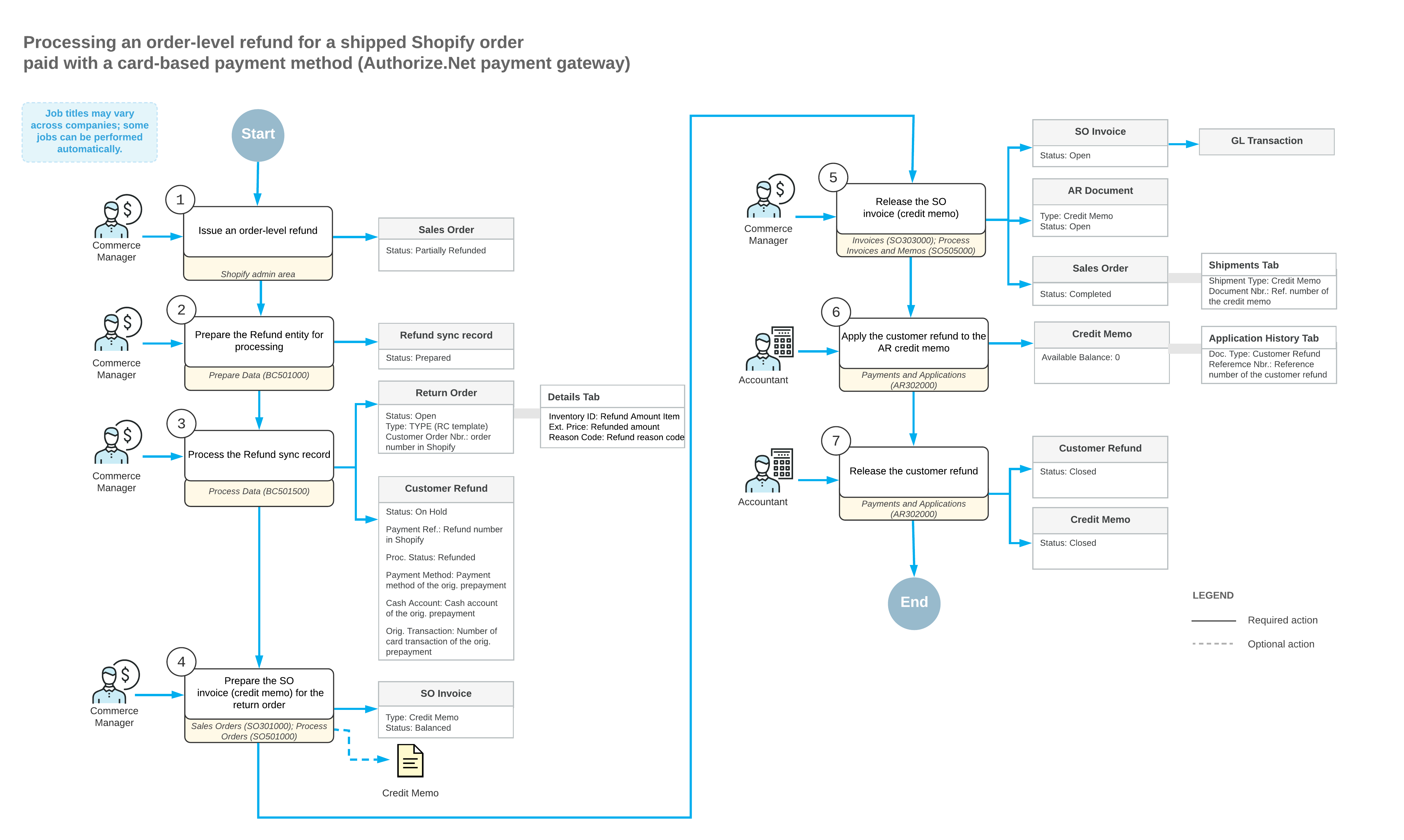Importing Card Refunds: Order-Level Refunds
An order-level refund may be issued, for example, if a customer has been overcharged or is not content with the quality of the product or service and needs to be partially reimbursed.
Import of Order-Level Refunds for Not-Yet-Shipped Orders
During the import of refunds on order amounts, if the original sales order has not been shipped (that is, it has the Open or On Hold status on the Sales Orders (SO301000) form), the system does the following:
- On the Payments and Applications (AR302000) form, the system creates a payment of the Refund type in the refunded amount and applies it to the original payment. If the sales order is fully refunded or canceled and the processing status of the original payment is Authorized, the original payment is voided.
- In the original sales order, on the Details tab of the Sales Orders form, the system inserts a line for the non-stock item that was specified in the Refund Amount Item box on the Orders tab of the Shopify Stores (BC201010) form. In the Unit Price and Ext. Price columns, the system inserts the reversed refund amount (that is, the amount with the minus sign). In the Reason Code column, the system inserts the reason code that was specified on the Orders tab of the Shopify Stores form.
The following diagram illustrates the processing of an order-level refund for a card-based payment method that is issued before the sales order has been shipped.

Import of Order-Level Refunds for Shipped Orders
If the original sales order has been fully shipped (that is, it has the Completed status on the Sales Orders (SO301000) form), the following actions occur when an order-level refund is being imported to MYOB Acumatica:
- On the Sales Orders form, the system creates a return order of the type selected in the Return Order Type box on the Orders tab of the Shopify Stores form. In the External Reference box of the Summary area, the system inserts the identifier of the refund in the Shopify store.
- In the return order, on the Details tab, the system inserts a line with the non-stock item that was specified in the Refund Amount Item box on the Orders tab of the Shopify Stores form. In the Unit Price and Ext. Price columns, the system inserts the refund amount. In the Reason Code column, the system inserts the reason code that was specified on the Orders tab of the Shopify Stores form.
- On the Payments and Applications (AR302000) form, creates a payment of the Refund type in the refunded amount and links it to the return order.
The following diagram illustrates the processing of an order-level refund for a card-based payment method that is issued after the sales order has been shipped.

